Foreword / YouTube Video Review
These speakers were loaned to me by their owner in brand new condition.
The review on this website is a brief overview and summary of the objective performance of this speaker. It is not intended to be a deep dive. Moreso, this is information for those who prefer “just the facts” and prefer to have the data without the filler. The video below has more discussion.
< coming soon >
Information and Photos
A quote from the manufacturer’s product page:
I am the overperforming little guy who will demand your respect after your first audition. I can be a serious 2 channel system with a subwoofer, an LCR, or a surround channel. Effortless dynamics and lightspeed transients remain the common thread of all Signature series speakers including the S4b. A bookshelf with this much technology is hard to find and can literally be the Ninja of any system. Bookshelf, main for a 2.1 system, LCR, Dominus Surround, it can transform into anything you need. Features including our proprietary DPC-Array controlling Mid/High frequencies and centered by our finest 28mm Beryllium dome and dual 28mm TPCD ultra-lightweight domes. All transducers are developed ground up by our engineers bringing decades of research and culminating in this world class design. All S-Series speakers share the same DPC-Array and benefit from our unique timbre matching technique across the entire series utilizing Beryllium and our advanced Carbon fiber. These speakers are an acoustic suspension to meet the demands of any listening room with unparalleled dynamic range and musical finesse. Very impressive system alone or when combined with a Perlisten subwoofer.
Price is approximately $8000 USD for the pair in this finish with limited edition finishes available for additional money.
CTA-2034 (SPINORAMA) and Accompanying Data
All data collected using Klippel’s Near-Field Scanner. The Near-Field-Scanner 3D (NFS) offers a fully automated acoustic measurement of direct sound radiated from the source under test. The radiated sound is determined in any desired distance and angle in the 3D space outside the scanning surface. Directivity, sound power, SPL response and many more key figures are obtained for any kind of loudspeaker and audio system in near field applications (e.g. studio monitors, mobile devices) as well as far field applications (e.g. professional audio systems). Utilizing a minimum of measurement points, a comprehensive data set is generated containing the loudspeaker’s high resolution, free field sound radiation in the near and far field. For a detailed explanation of how the NFS works and the science behind it, please watch the below discussion with designer Christian Bellmann:
The reference plane in this test is at the tweeter. Testing was performed without the grilles.
Measurements are provided in a format in accordance with the Standard Method of Measurement for In-Home Loudspeakers (ANSI/CTA-2034-A R-2020). For more information, please see this link.
CTA-2034 / SPINORAMA:
The On-axis Frequency Response (0°) is the universal starting point and in many situations it is a fair representation of the first sound to arrive at a listener’s ears.
The Listening Window is a spatial average of the nine amplitude responses in the ±10º vertical and ±30º horizontal angular range. This encompasses those listeners who sit within a typical home theater audience, as well as those who disregard the normal rules when listening alone.
The Early Reflections curve is an estimate of all single-bounce, first-reflections, in a typical listening room.
Sound Power represents all of the sounds arriving at the listening position after any number of reflections from any direction. It is the weighted rms average of all 70 measurements, with individual measurements weighted according to the portion of the spherical surface that they represent.
Sound Power Directivity Index (SPDI): In this standard the SPDI is defined as the difference between the listening window curve and the sound power curve.
Early Reflections Directivity Index (EPDI): is defined as the difference between the listening window curve and the early reflections curve. In small rooms, early reflections figure prominently in what is measured and heard in the room so this curve may provide insights into potential sound quality.
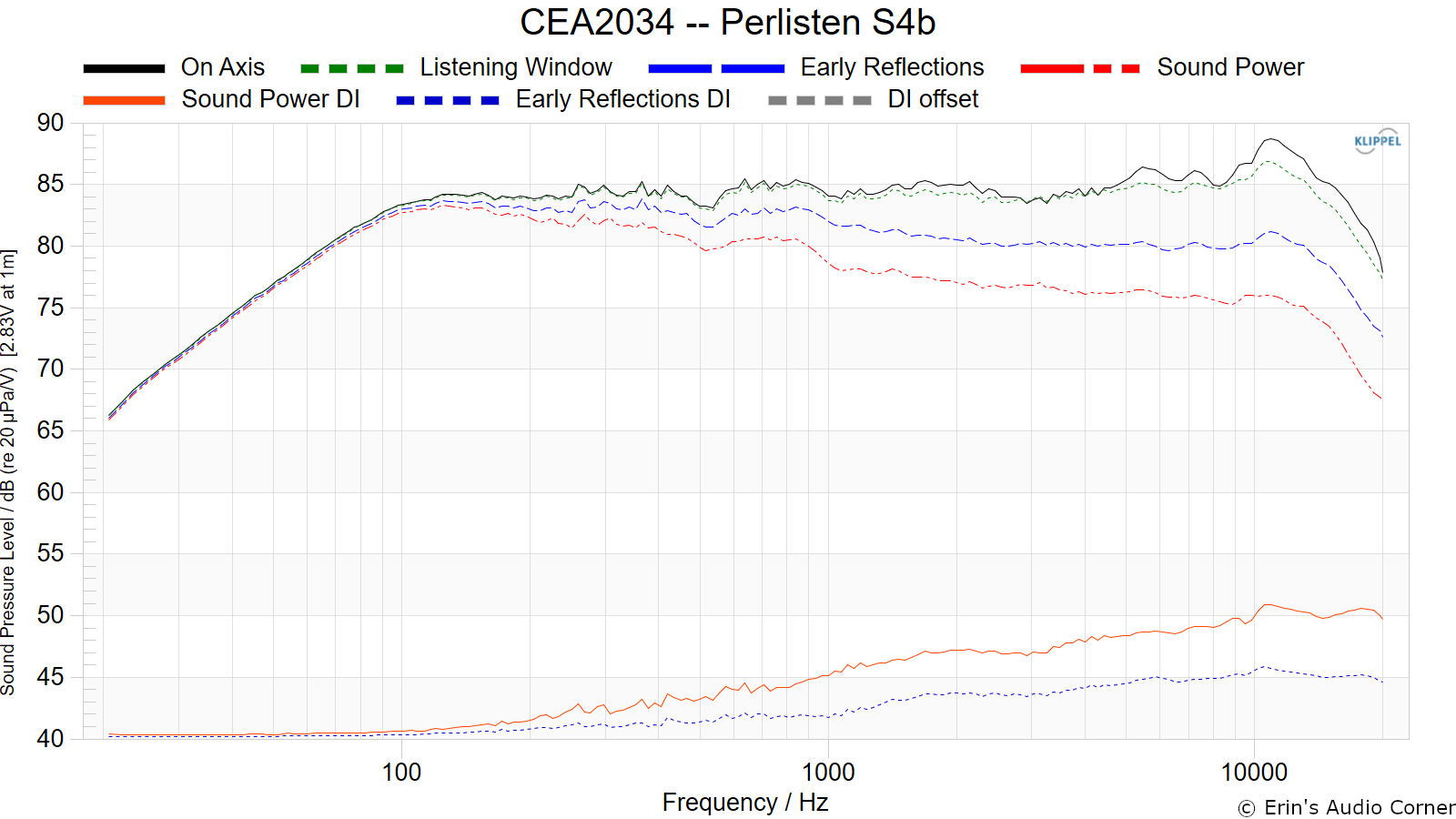
Early Reflections Breakout:
Floor bounce: average of 20º, 30º, 40º down
Ceiling bounce: average of 40º, 50º, 60º up
Front wall bounce: average of 0º, ± 10º, ± 20º, ± 30º horizontal
Side wall bounces: average of ± 40º, ± 50º, ± 60º, ± 70º, ± 80º horizontal
Rear wall bounces: average of 180º, ± 90º horizontal

Estimated In-Room Response:
In theory, with complete 360-degree anechoic data on a loudspeaker and sufficient acoustical and geometrical data on the listening room and its layout it would be possible to estimate with good precision what would be measured by an omnidirectional microphone located in the listening area of that room. By making some simplifying assumptions about the listening space, the data set described above permits a usefully accurate preview of how a given loudspeaker might perform in a typical domestic listening room. Obviously, there are no guarantees, because individual rooms can be acoustically aberrant. Sometimes rooms are excessively reflective (“live”) as happens in certain hot, humid climates, with certain styles of interior décor and in under-furnished rooms. Sometimes rooms are excessively “dead” as in other styles of décor and in some custom home theaters where acoustical treatment has been used excessively. This form of post processing is offered only as an estimate of what might happen in a domestic living space with carpet on the floor and a “normal” amount of seating, drapes and cabinetry.
For these limited circumstances it has been found that a usefully accurate Predicted In-Room (PIR) amplitude response, also known as a “room curve” is obtained by a weighted average consisting of 12 % listening window, 44 % early reflections and 44 % sound power. At very high frequencies errors can creep in because of excessive absorption, microphone directivity, and room geometry. These discrepancies are not considered to be of great importance.

Horizontal Frequency Response (0° to ±90°):

Vertical Frequency Response (0° to ±40°):

Horizontal Contour Plot (not normalized):

Horizontal Contour Plot (normalized):
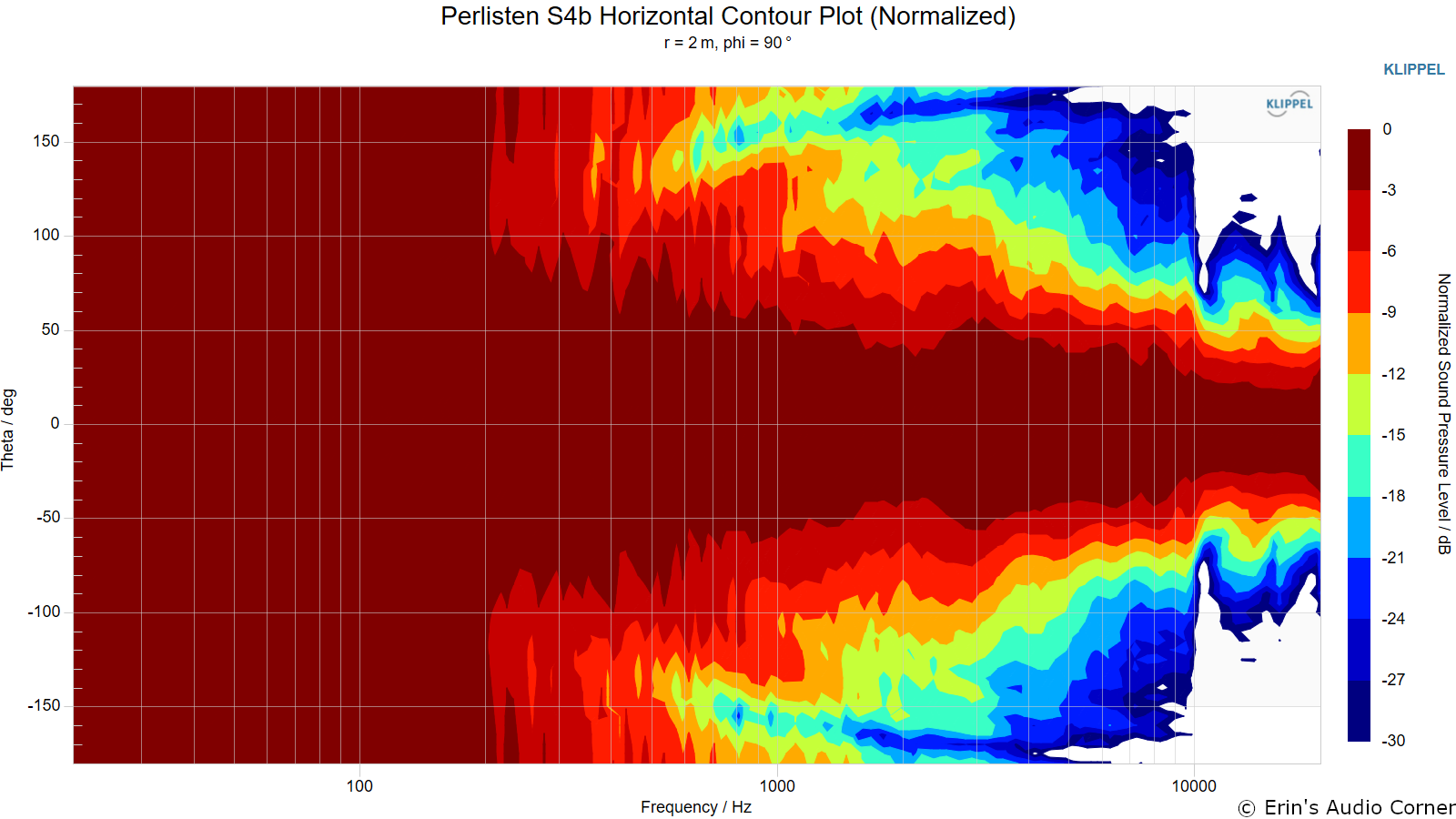
Vertical Contour Plot (not normalized):
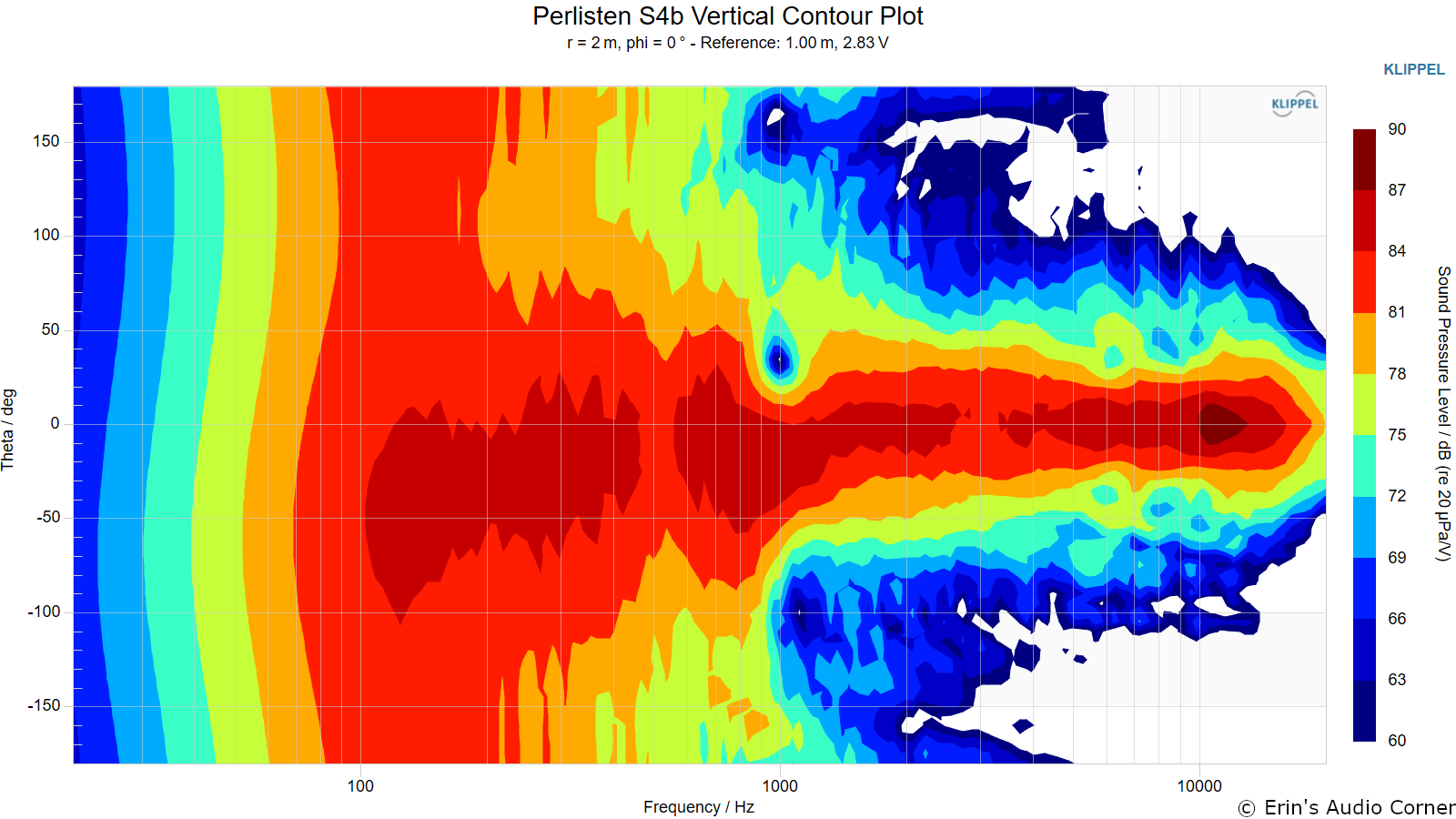
Vertical Contour Plot (normalized):
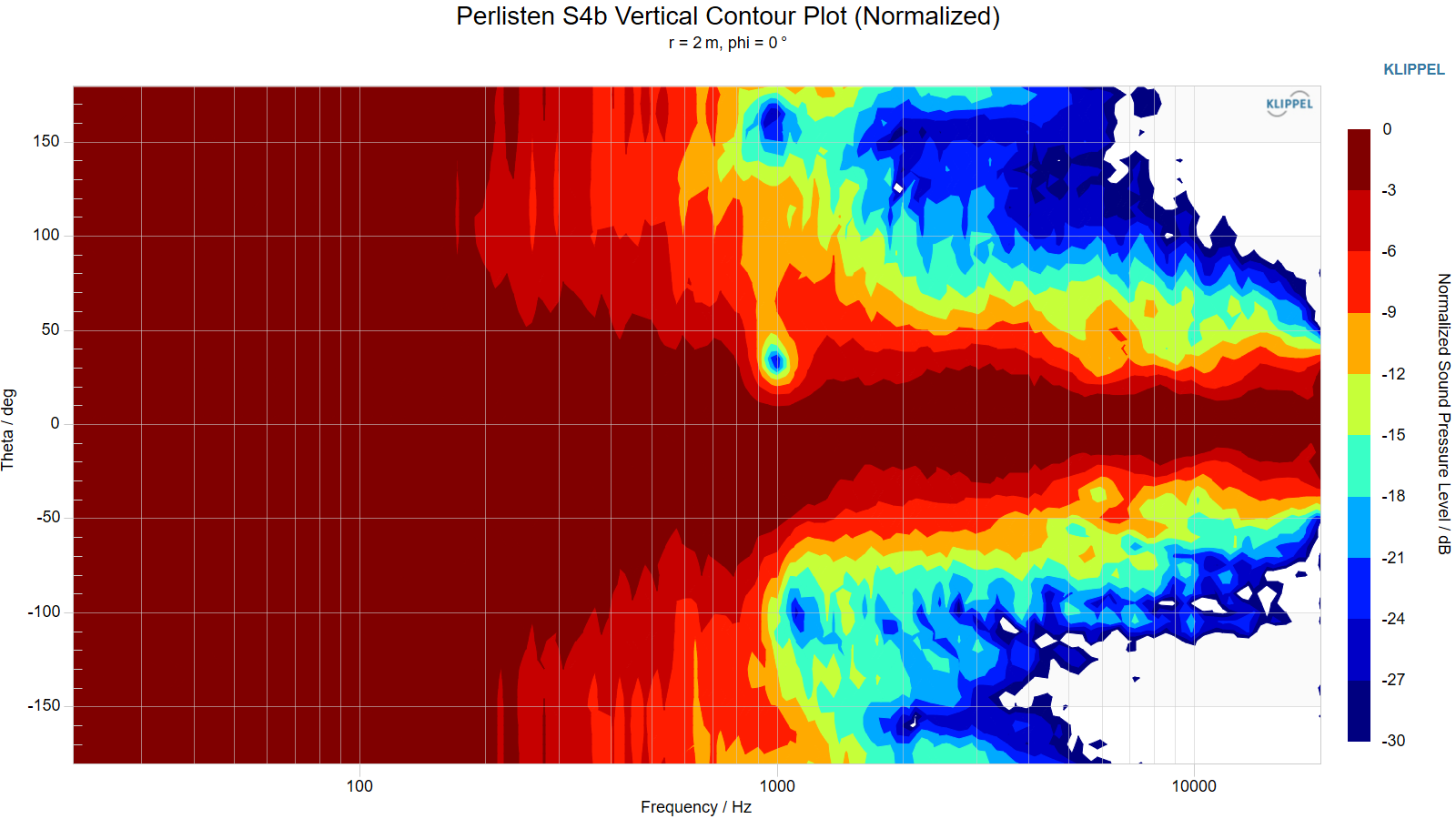
“Globe” Plots
Horizontal Polar (Globe) Plot:
This represents the sound field at 2 meters - above 200Hz - per the legend in the upper left.
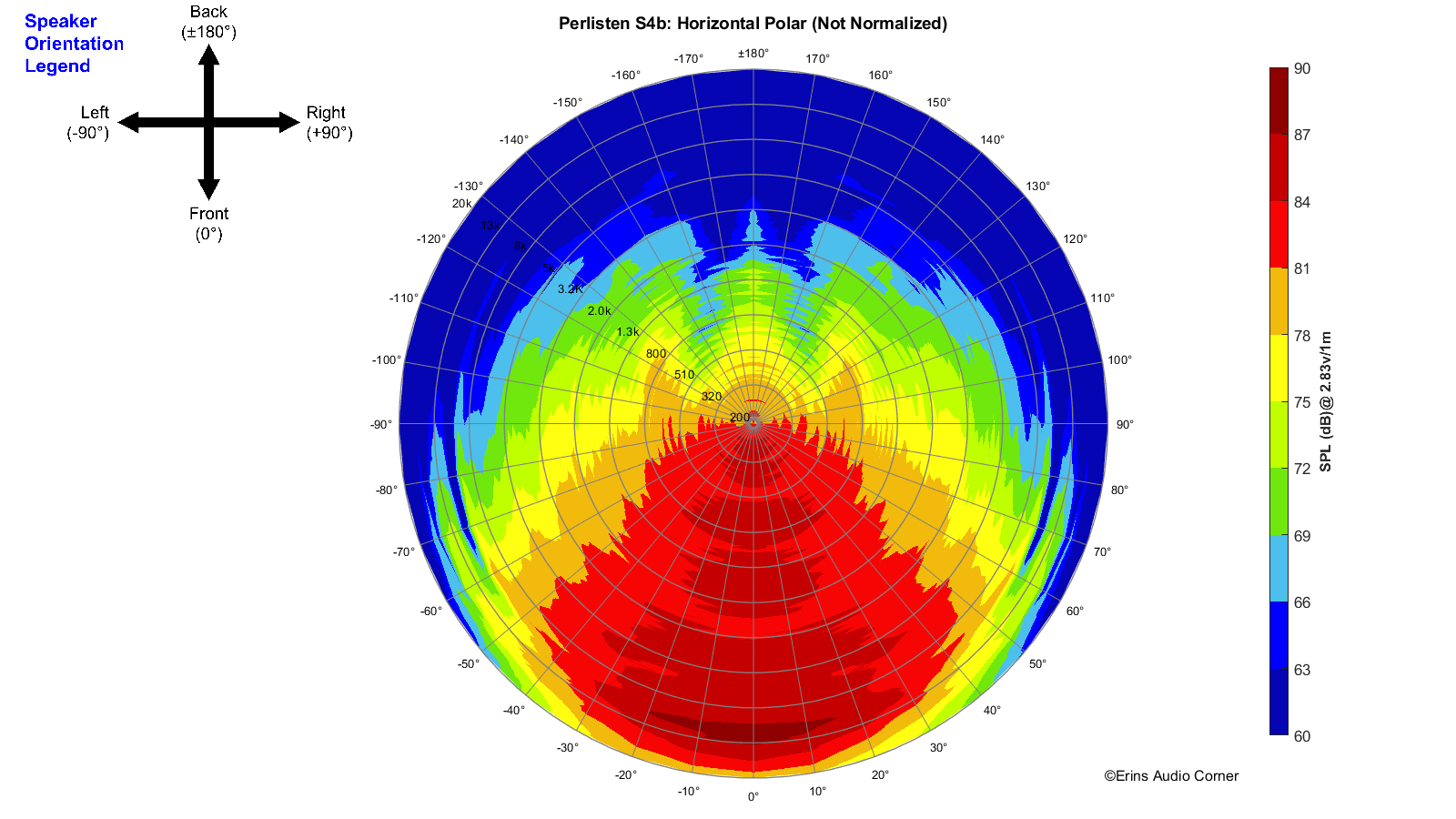
Vertical Polar (Globe) Plot:
This represents the sound field at 2 meters - above 200Hz - per the legend in the upper left.
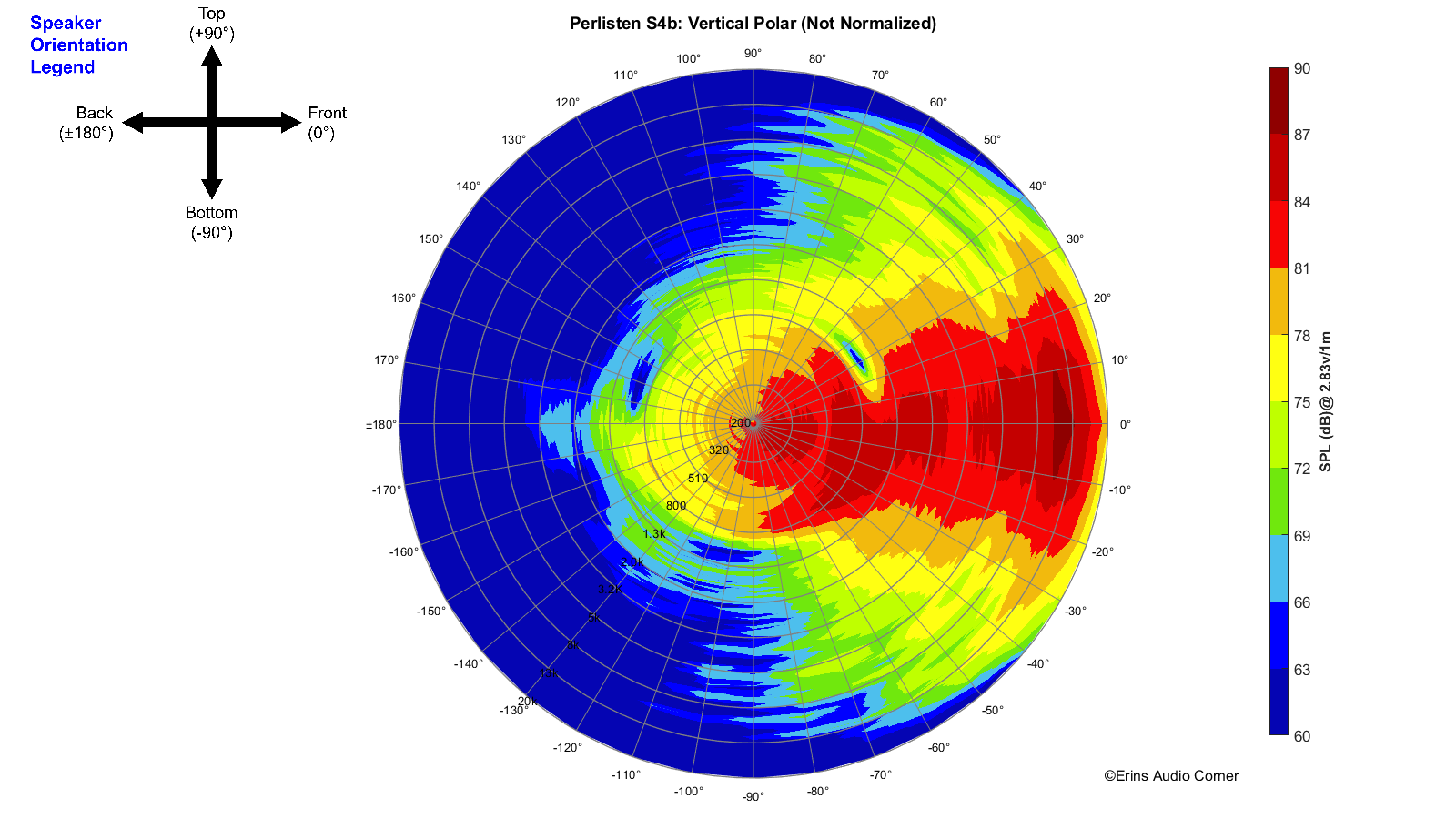
Additional Measurements
On-Axis Response Linearity

Impedance Magnitude and Phase + Equivalent Peak Dissipation Resistance (EPDR)
For those who do not know what EPDR is (ahem, myself until 2020), Keith Howard came up with this metric which he defined in a 2007 article for Stereophile as:
… simply the resistive load that would give rise to the same peak device dissipation as the speaker itself.
A note from Dr. Jack Oclee-Brown of Kef (who supplied the formula for calculating EPDR):
Just a note of caution that the EPDR derivation is based on a class-B output stage so it’s valid for typical class-AB amps but certainly not for class-A and probably has only marginal relevance for class-D amps (would love to hear from a class-D expert on this topic).
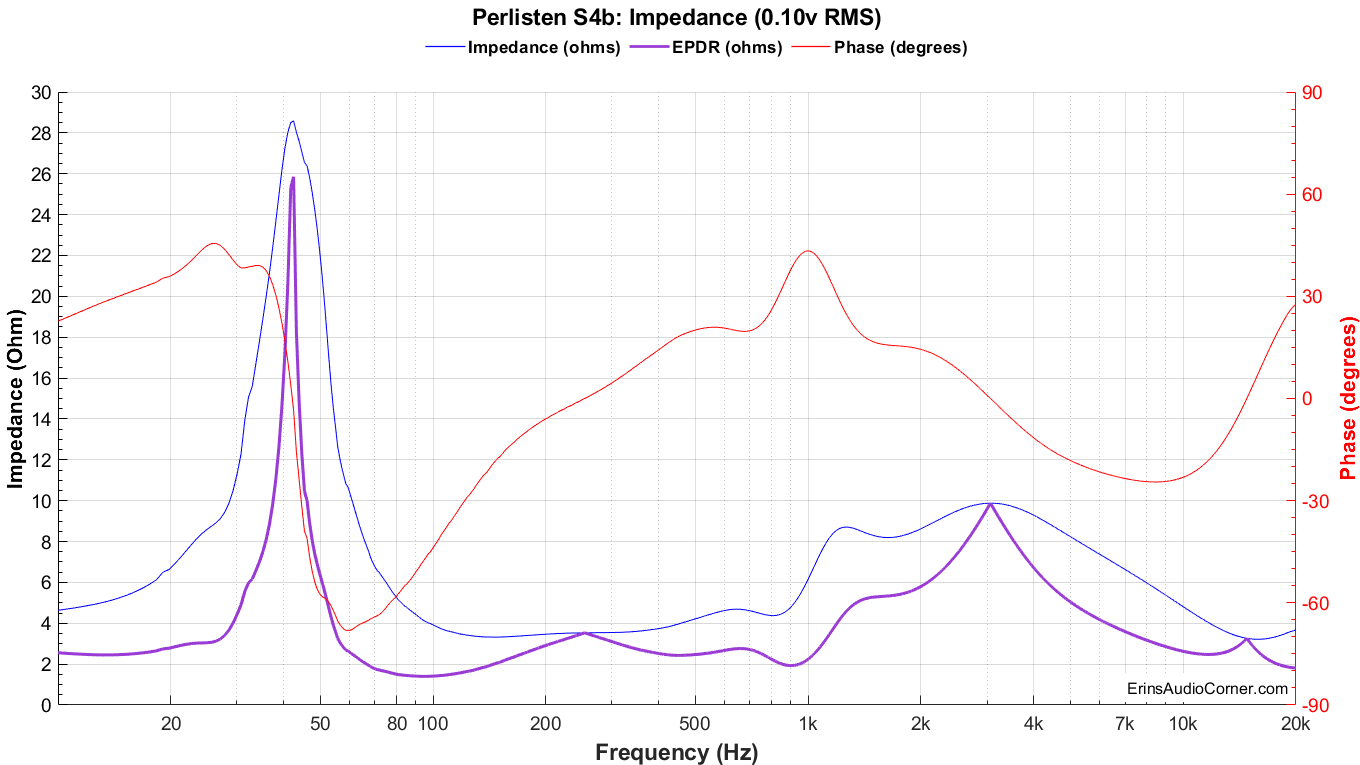
Group Delay (smoothed to 1/3-octave)
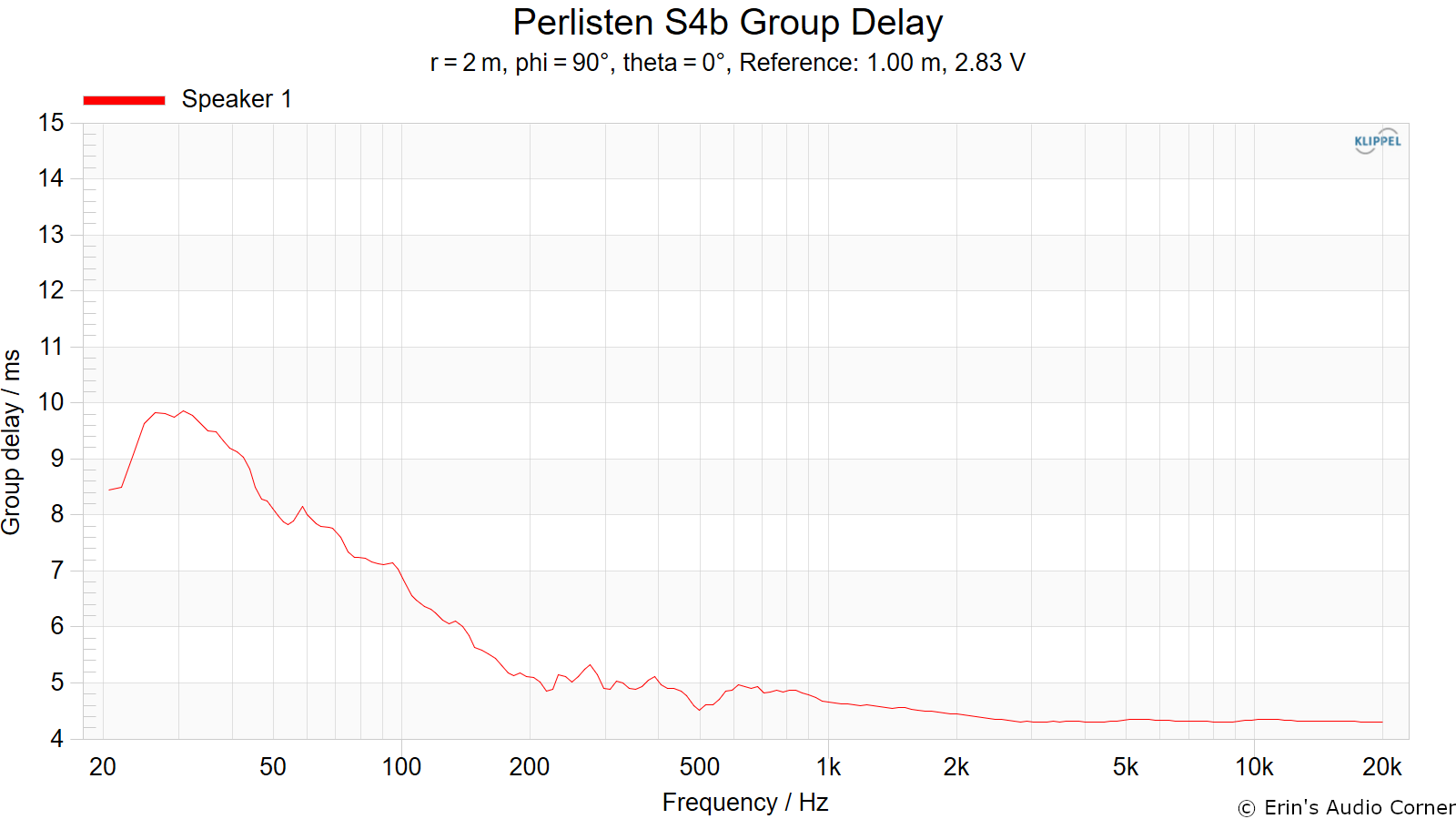
Step Response
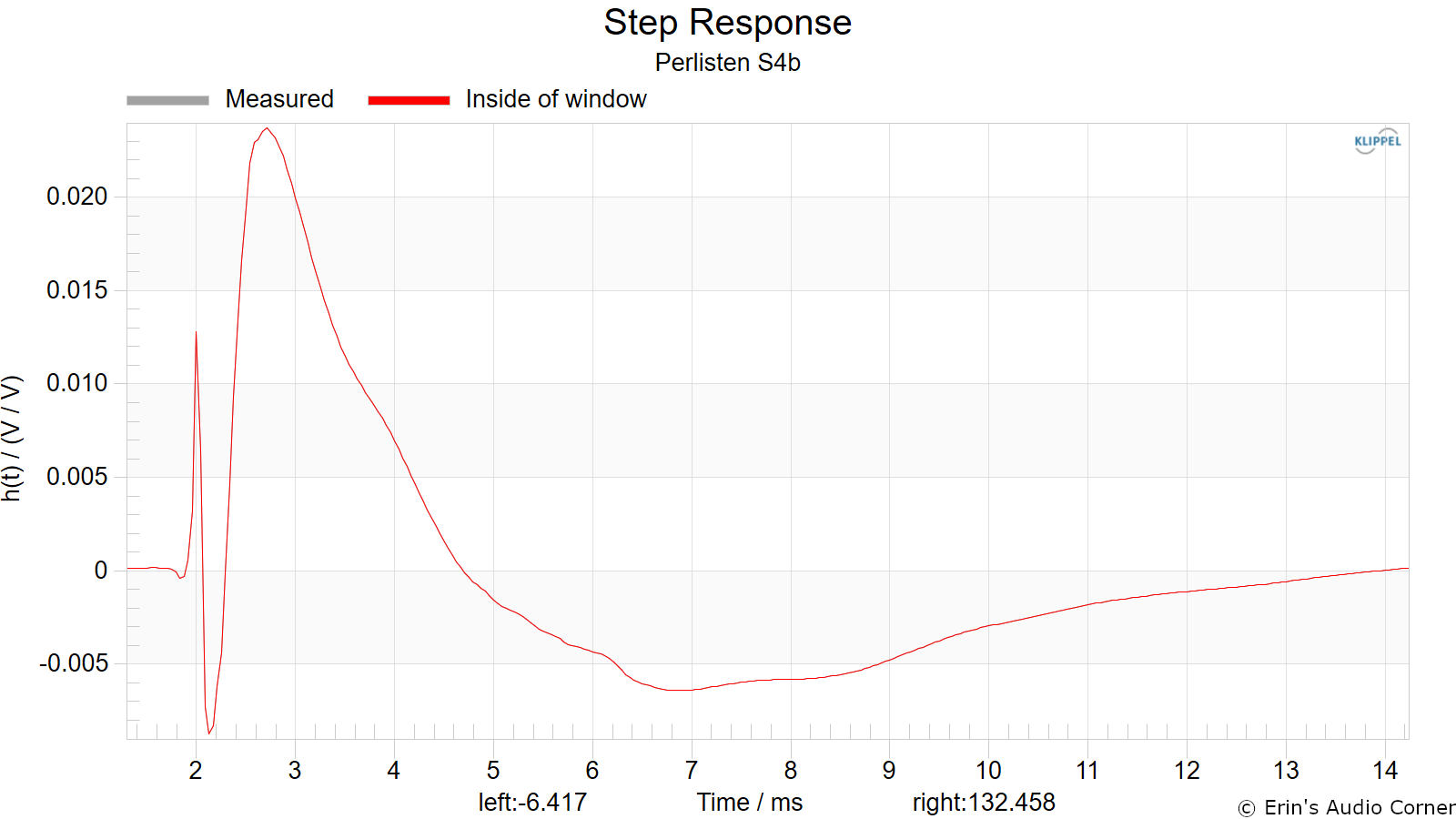
Near-Field Response
Nearfield response of individual drive units:
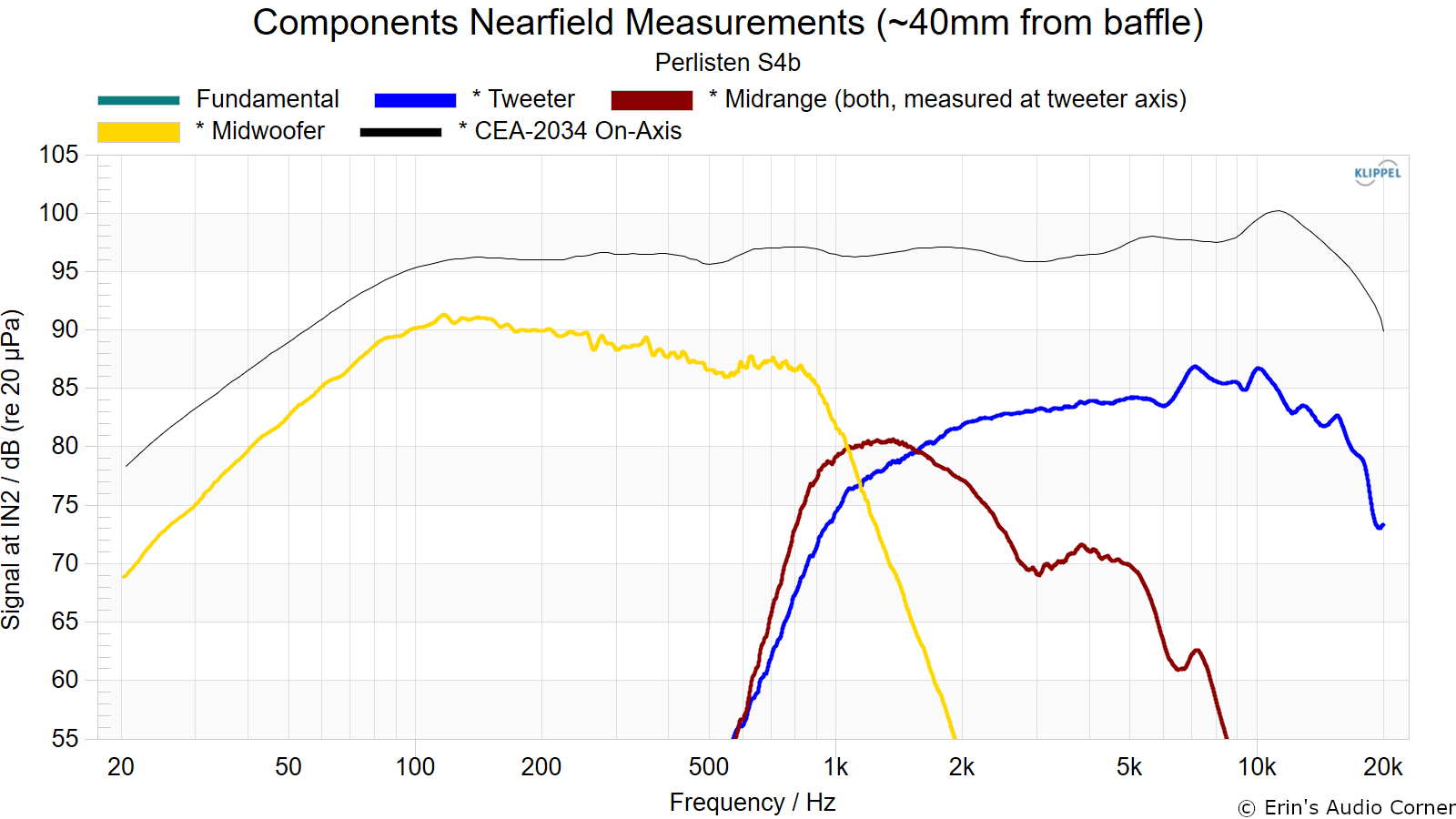
Waveguide Tweeter/Midrange Array Individual impedance
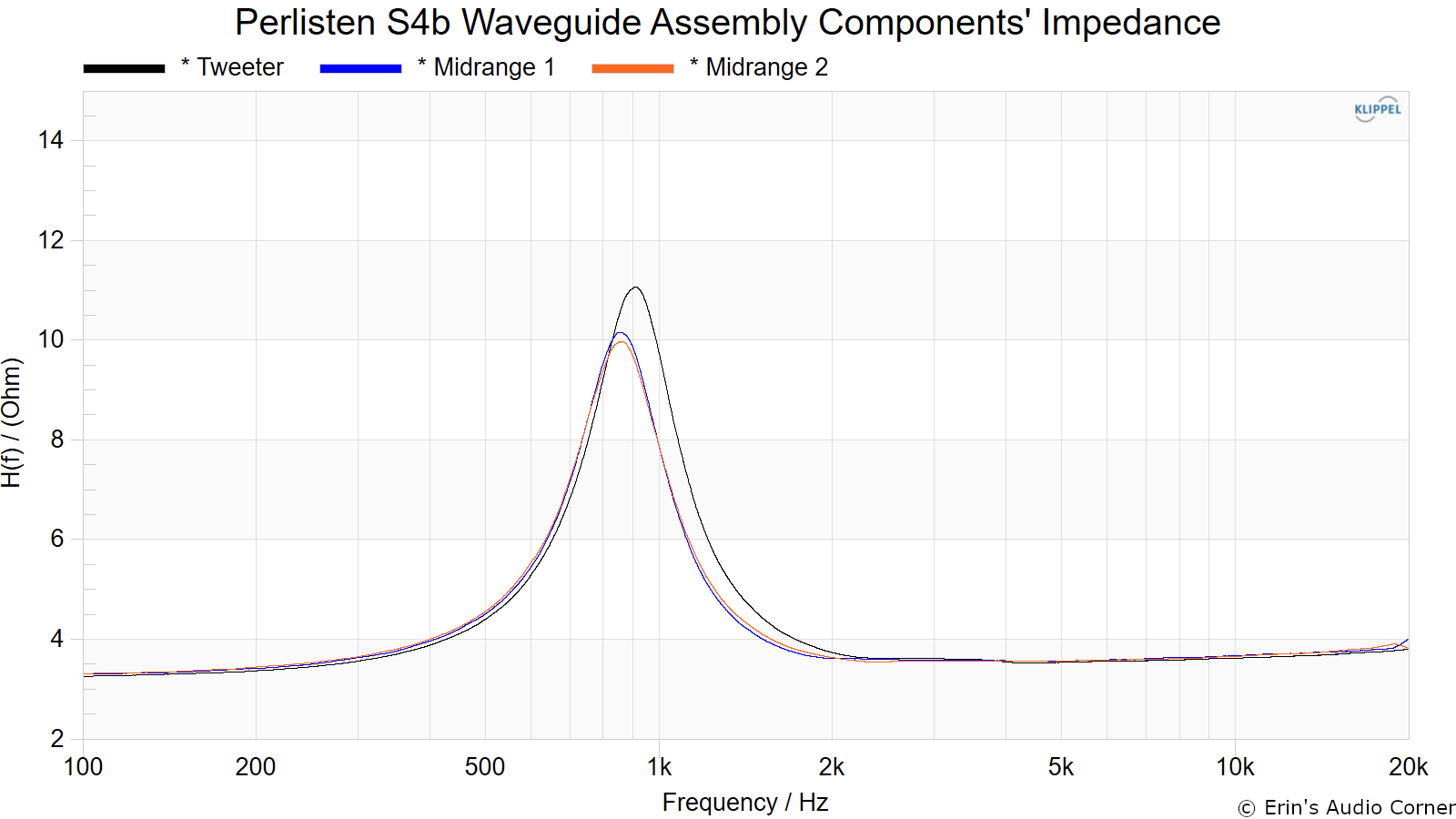
Harmonic Distortion
Harmonic Distortion at 86dB @ 1m:
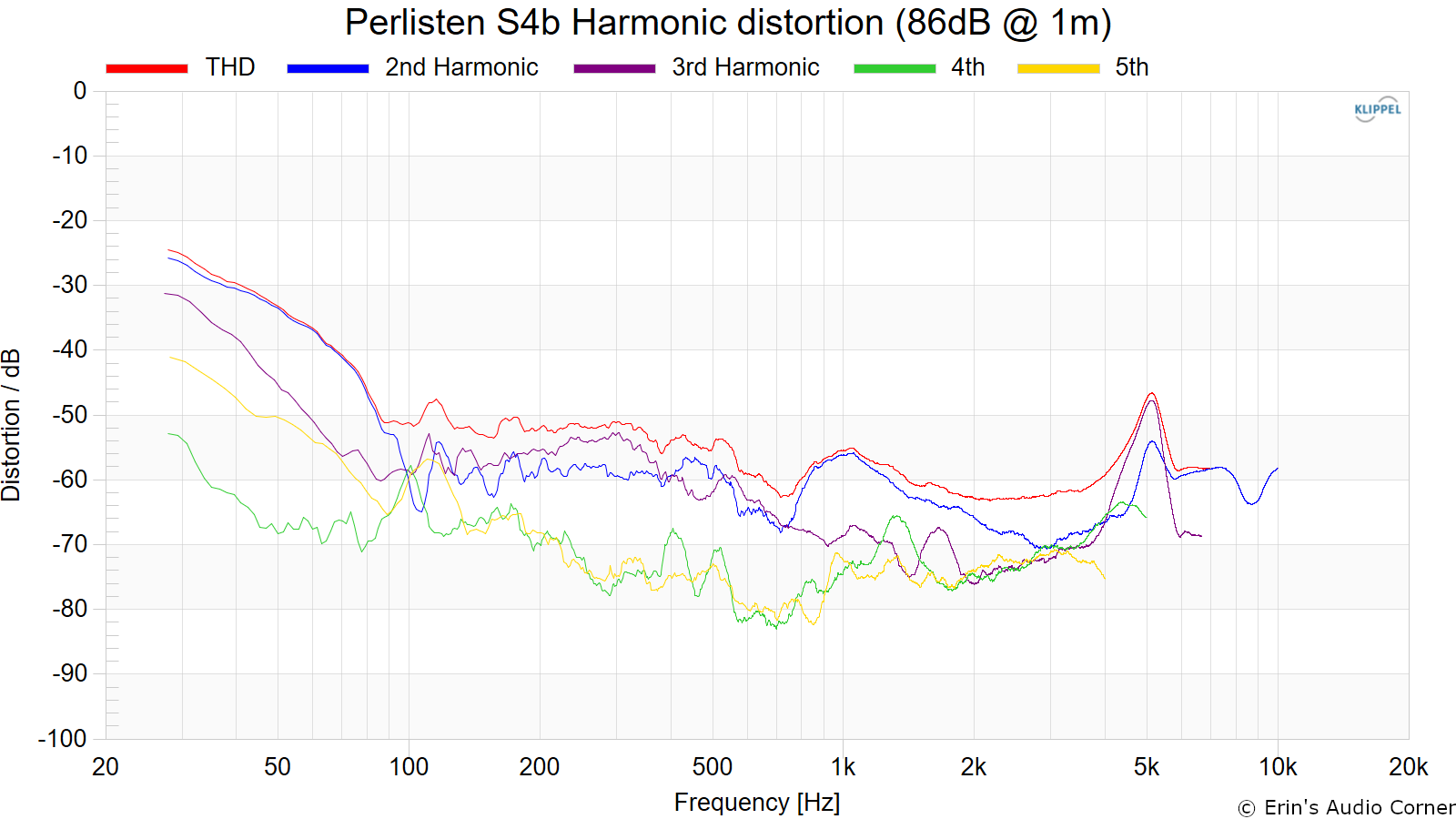
Harmonic Distortion at 96dB @ 1m:
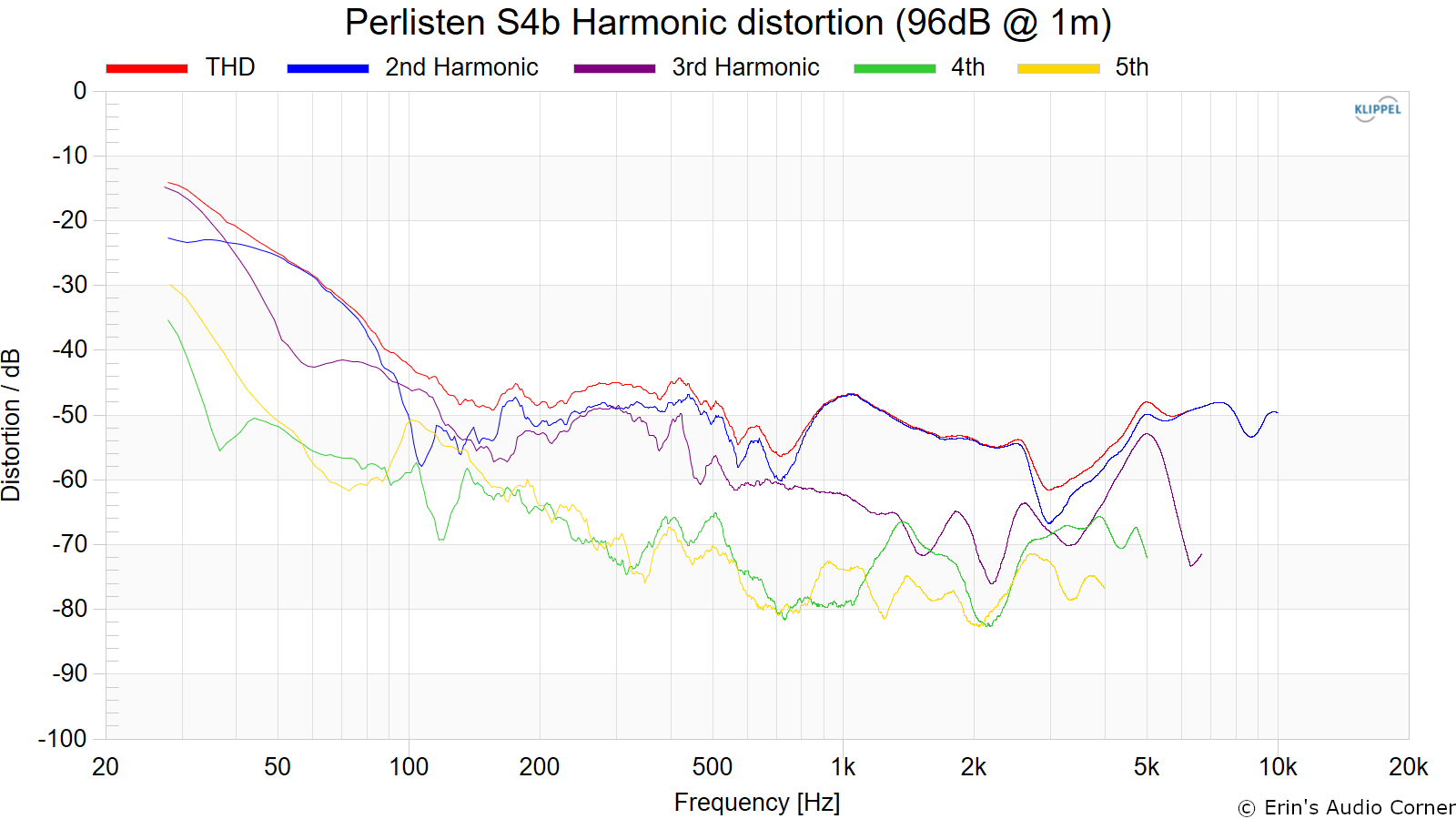
Dynamic Range (Instantaneous Compression Test)
The below graphic indicates just how much SPL is lost (compression) or gained (enhancement; usually due to distortion) when the speaker is played at higher output volumes instantly via a 2.7 second logarithmic sine sweep referenced to 76dB at 1 meter. The signals are played consecutively without any additional stimulus applied. Then normalized against the 76dB result.
The tests are conducted in this fashion:
- 76dB at 1 meter (baseline; black)
- 86dB at 1 meter (red)
- 96dB at 1 meter (blue)
- 102dB at 1 meter (purple)
The purpose of this test is to illustrate how much (if at all) the output changes as a speaker’s components temperature increases (i.e., voice coils, crossover components) instantaneously.
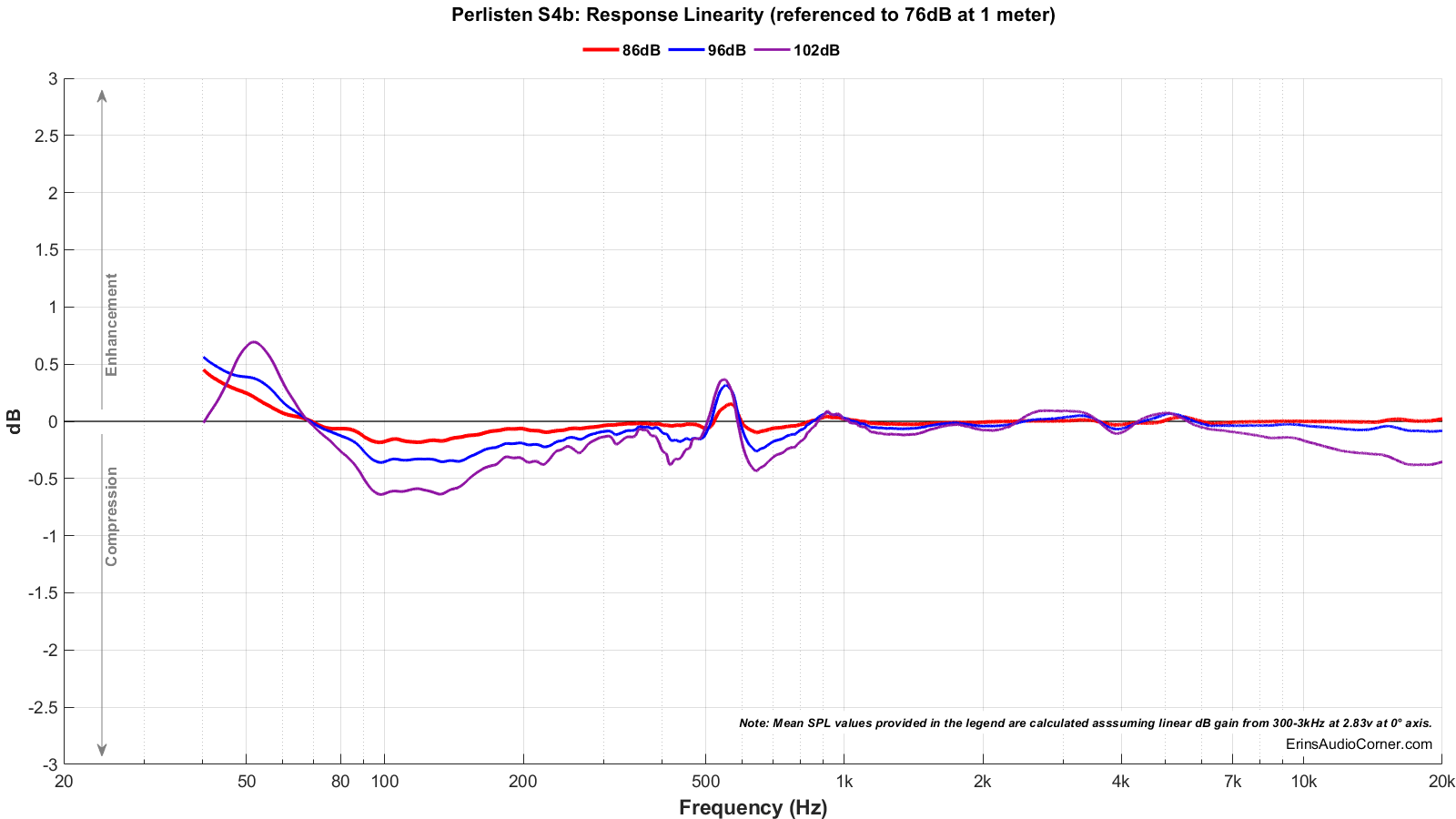
Long Term Compression Tests
The below graphics indicate how much SPL is lost or gained in the long-term as a speaker plays at the same output level for 2 minutes, in intervals. Each graphic represents a different SPL: 86dB and 96dB both at 1 meter.
The purpose of this test is to illustrate how much (if at all) the output changes as a speaker’s components temperature increases (i.e., voice coils, crossover components).
The tests are conducted in this fashion:
- “Cold” logarithmic sine sweep (no stimulus applied beforehand)
- Multitone stimulus played at desired SPL/distance for 2 minutes; intended to represent music signal
- Interim logarithmic sine sweep (no stimulus applied beforehand) (Red in graphic)
- Multitone stimulus played at desired SPL/distance for 2 minutes; intended to represent music signal
- Final logarithmic sine sweep (no stimulus applied beforehand) (Blue in graphic)
The red and blue lines represent changes in the output compared to the initial “cold” test.
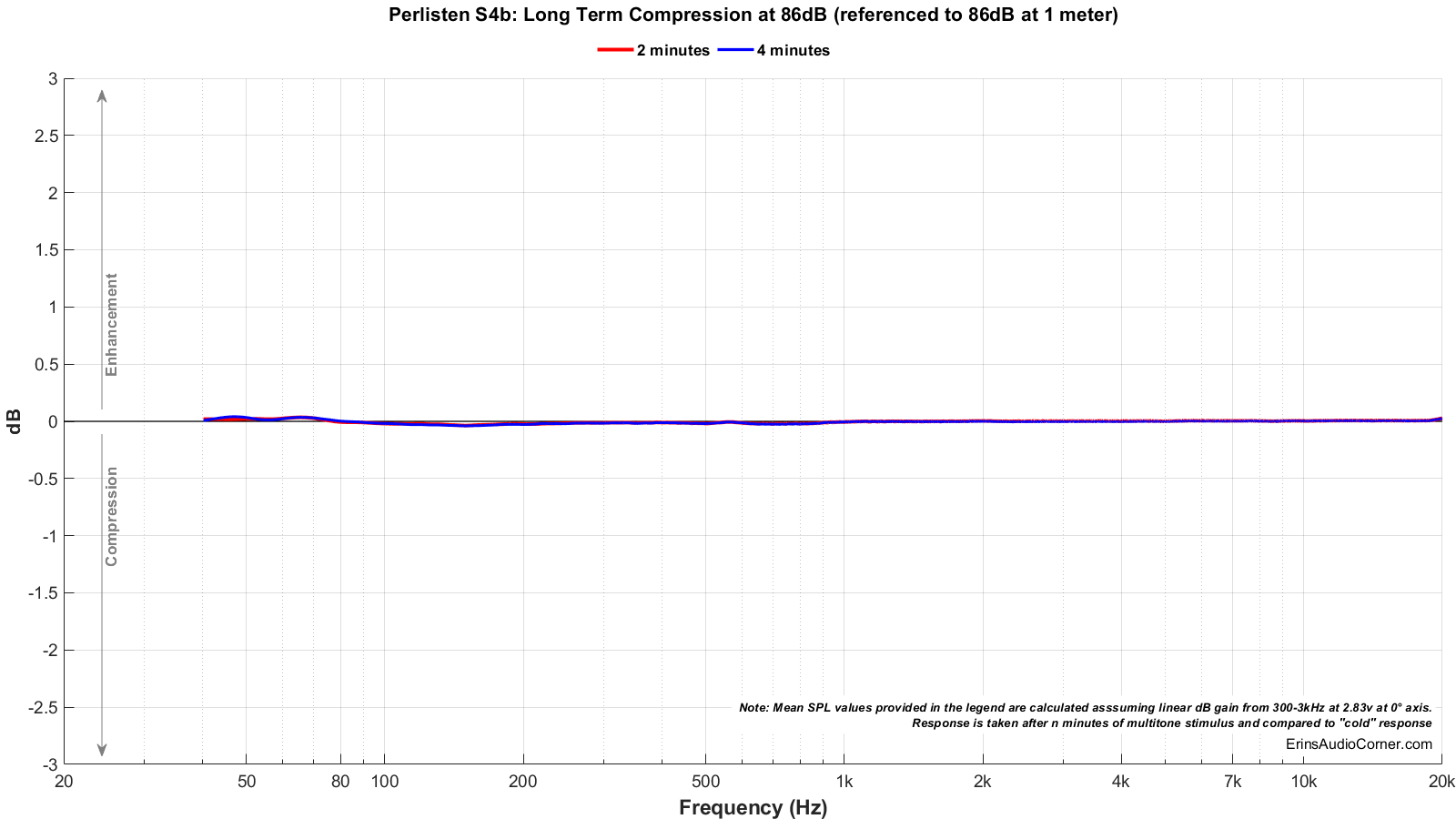
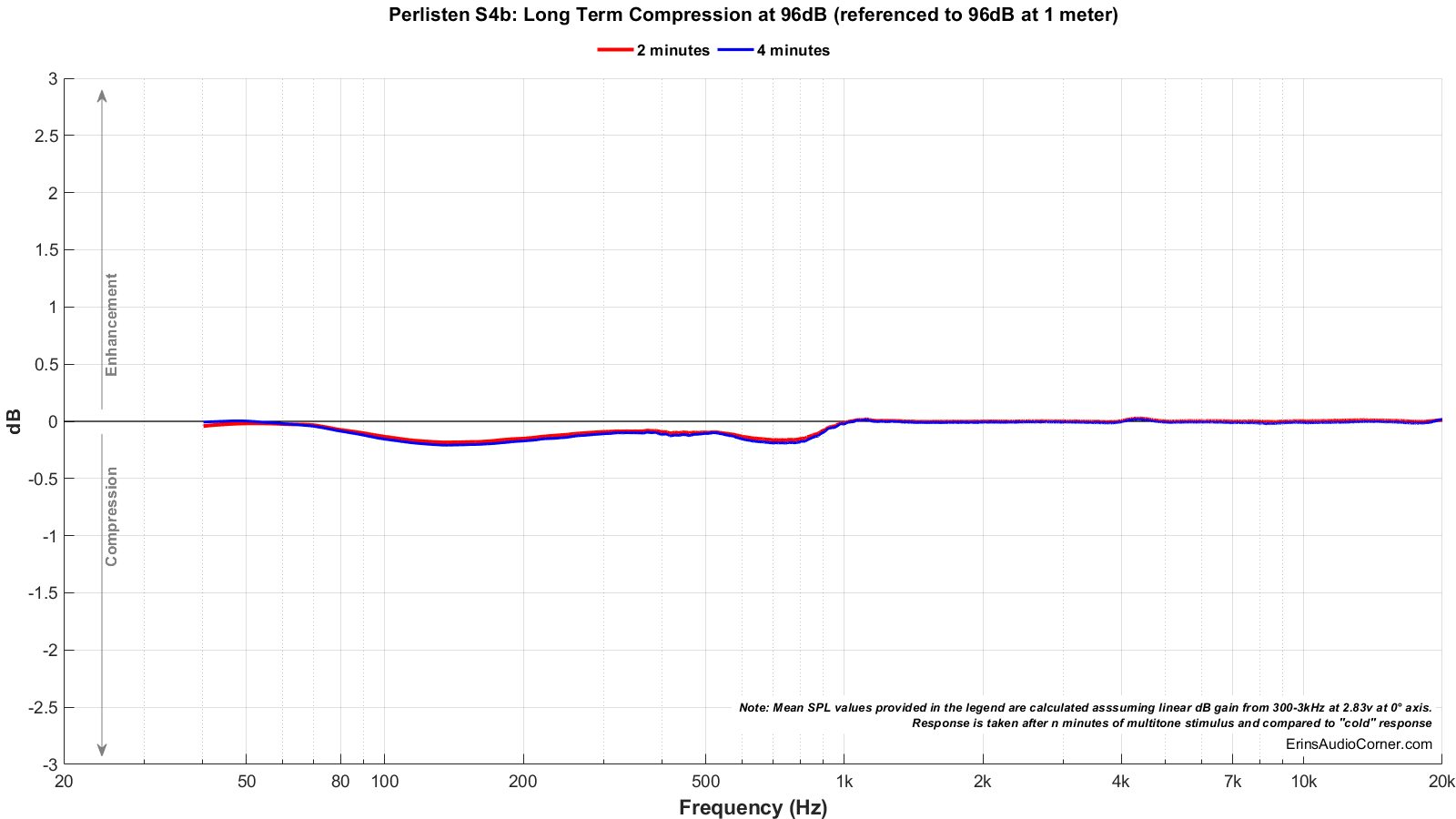
Parting / Random Thoughts
If you want to see the music I use for evaluating speakers subjectively, see my Spotify playlist.
I always listen to speakers before I measure them. This ensures I am not swayed by the measurements before I listen. I then work to find correlations between what I heard subjectively and what I see in the data and repeat the process of listening again.
- The midrange clarity is unrivaled by any speaker I have heard to date. For example: In Matchbox Twenty’s “Real World”, the snare had a distinct wall bounce in the recording that I had not noticed before. I actually used a few other speakers on hand to see if I could hear this same event but none managed to provide that same distinct sound. I cannot state with certainty what might be the factor for this. However, I do wonder if the narrow vertical directivity is one such factor (or even the factor). The majority of speakers I have heard thus far generally exhibit a vertical radiation pattern in the neighborhood of ±40 to ±50°. The Perlisten S4b, however, has a radiation pattern from ±20° ±30° thanks to the tweeter/midrange waveguide assembly. The center-to-center spacing of the midrange drivers is approximately 103mm which yields a beaming point of approximately 850Hz (using 1/4-wave; or ~1700Hz using 1/2-wave). The use of this vertical array with smaller drivers could, in some ways, be considered like a ribbon tweeter where the narrow width allows wider horizontal directivity but the taller height limits the vertical radiation. This is seen in the vertical contour plot as the beamwidth decreases from about ±80° to ±30° from ~700Hz to ~1600Hz. In the same vein that a narrower horizontal radiation pattern typically yields more focused imaging, I can’t help but wonder if the S4b’s reduction in vertical radiation yields a more focused soundstage. Given speakers are a very complex thing, it’s hard to determine exactly what may have led to what I heard but that’s my gut feeling on this subjective takeaway. It is my opinion that this is the sole factor that separates this speaker from any other speaker I have heard. Whether or not that is enough for someone to justify the price, however, is something I cannot say.
- Speaking of directivity, the horizontal radiation is very well controlled, maintaining a ±50° dispersion pattern as the midwoofer hands off to the tweeter at approximately 1kHz. The soundstage was reasonably wide - though, not as wide as other speakers I have reviewed - but wide enough that I wouldn’t consider it a detriment.
- In terms of output, I managed to get these speakers to approximately 100dB at about 3.5 meters listening distance, playing full range (without a high-pass crossover). Above this output level, however, the woofer would “pop”. Notably, I heard this with Dire Straits’ “Money For Nothin”. A proper high-pass filter (when paired with subs) eliminates this and allows for additional output.
- Bass notes stood right up in the soundstage and were distinct as I’d ever noticed before. There was no bloom or wander to these notes; they were as stable as I’d expect them to be.
- The directivity index is really remarkable, showing a nice linear increase above the midrange with only a few very minor points where the linearity would shift ever-so-slightly. Comparing this to other speakers I have measured, I’d say this might be the best I have measured thus far. It performs better than the LS50 Wireless II (which features a single coincident driver). The only other speaker this compares to in regard to the early reflections directivity index is the Dutch & Dutch 8C. It is worth noting the DD8C is also one of the best speakers I have ever heard but is a fully active speaker where this Perlisten is passive.
- The bass of the S4b does not extend low and necessitates the use of a subwoofer if one plans to use this speaker as the anchor in a front stage setup (i.e., 2-channel or multi-channel front speakers). Therefore, it’s not exactly an easy “sell” given the price tag. That’s my only real gripe here. However, this speaker does not pretend to be full-range and the manufacturer makes no such claim. In fact, the following quote comes from the manufacturer’s spec sheet:
Great for use in 2.1 systems or any channel of theater system utilizing subwoofers. When properly integrated with a subwoofer this concern would be moot and I’d be left with something phenomenal, for sure. For further thought, consider this: while many ported cabinets exhibit a lower F3, they have with a steeper rolloff, yielding a higher F10. With the design goal of these speakers being intended to be used with a subwoofer, the sealed design should make it a bit easier to do so and room placement will naturally increase the low end. I’m not saying I wouldn’t want lower bass extension … I am just providing some thought into the design goal of this particular speaker with respect to low frequency extension. - The sealed design allows more flexibility with placement. While I found the best location for them was set out in my room, you do get the benefit of bass boost when placed closer to a boundary and they do respond to that. It is necessary to experiment with placement in your room to get the best response you can for your needs.
- The +3dB peak at approximately 10kHz was not something I found noticeable in my initial round of listening. That said, I did not specifically go back and listen for music with this knowledge in mind.
Overall, one of the best performing speakers I have seen. There is a magic in the midrange that is uncanny and was a characteristic that made me tilt my head and go “hold on… let’s hear that again” as I went through my library of music.
As stated in the Foreword, this written review is purposely a cliff’s notes version. For more details about the performance (objectively and subjectively) please watch the YouTube video.
Support the Cause
I paid for this item to be shipped from the owner - across the country with insurance - to me. Total shipping round-trip was about $430. I was happy to pay it so we could get some good data on it. That said, if you like what you see here and want to help me cover those costs that would be awesome! There are a few ways you can do so:
You can also join my Facebook and YouTube pages if you’d like to follow along with updates.